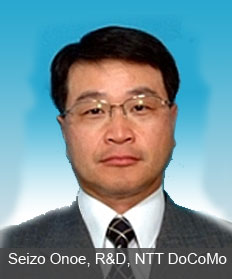Focus on the future
Nordic carrier TeliaSonera may have stolen much of the limelight with its launch of LTE in Stockholm and Oslo, but other carriers are hot on its heels with a view to launching the 4G technology before the year is out. At the LTE World Summit in Amsterdam, telecoms.com caught up with Seizo Onoe, SVP and managing director of the R&D strategy department at NTT DoCoMo, and got his views on LTE deployment.
May 28, 2010

Nordic carrier TeliaSonera may have stolen much of the limelight with its launch of LTE in Stockholm and Oslo, but other carriers are hot on its heels with a view to launching the 4G technology before the year is out. At the LTE World Summit in Amsterdam, telecoms.com caught up with Seizo Onoe, SVP and managing director of the R&D strategy department at NTT DoCoMo, and got his views on LTE deployment.
Seizo said that the Japanese carrier has been experimenting with LTE for two years now and has long aimed to launch the technology commercially in 2010. “We will launch LTE commercially in December of this year,” Seizo says. “We want to be one of the leading operators in this space and DoCoMo’s policy is now to focus on upgrading technology to 4G.”
The company has been laying the foundations for its LTE deployment by rolling out new WCDMA base stations that will be compatible with the 4G technology. The new remote radio equipment (RRE) capable base station, which are WCDMA and LTE compatible, will account for about half of the carrier’s initial quota of LTE base stations when DoCoMo launches LTE services later this year.
The deployment is part of DoCoMo’s plan to layer a 2GHz LTE network over its existing 3G network to provide dual WCDMA/LTE services, as the LTE network is expanded gradually. “In Japan 2G will be terminated within two years so we will continue with 3G and LTE. We could even terminate 3G but we have to consider the users that will be roaming into Japan so we will probably keep 3G for the time being,” Seizo says.
Commenting on the main drivers for adoption of the technology, he adds: “LTE has high performance with high speed and high capacity and low latency. Of course, low latency is the most important point for providing new services.” But where will the bulk of LTE revenues come from? “New revenues should be created by servicing provisioning and LTE will not resolve that issue alone,” Seizo says.
Read more about:
DiscussionAbout the Author(s)
You May Also Like








.png?width=300&auto=webp&quality=80&disable=upscale)


_1.jpg?width=300&auto=webp&quality=80&disable=upscale)


.png?width=800&auto=webp&quality=80&disable=upscale)